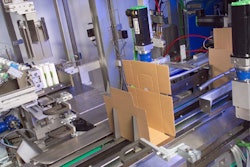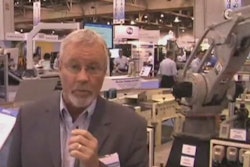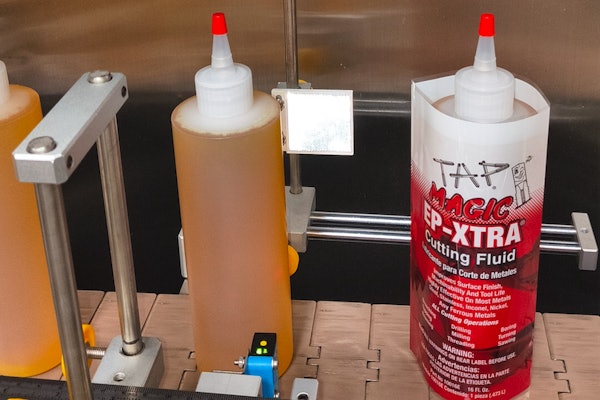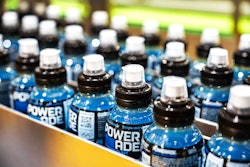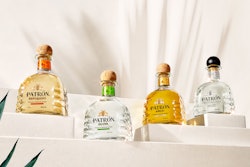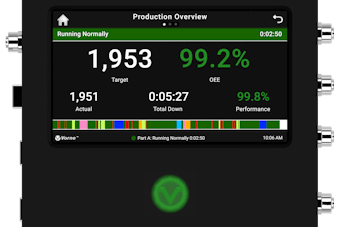
It seems the quaint European tradition of small shopkeepers is beginning to fade. Two-income families, career-minded women, and an unavoidable gravitation toward all things modern and convenient are drawing people into shiny new hypermarkets and away from the boulangerie or pasticceria or backerei.
At least that's the picture Andrea Monti painted for me the other day when I phoned him in Como, Italy. Andrea is export sales manager of the Italian packaging machinery maker Yang (more in a moment on that unusual company name). I met Andrea at Ipack Ima last March in Milan, and I called him last week for an update on a story lead at a meat packaging company. Our conversation gradually veered away from that topic and focused instead on how hypermarkets are steadily encroaching on the market share of the small and fiercely independent shopkeepers of Italy.
Centrally packaged luncheon meat with a 30-day shelf life is, of course, a key offering in any self-respecting hypermarket. But Yang is exploring the possibility of another kind of luncheon meat concept: modified-atmosphere packaging done right in the store, in full view of the shopper.
Yang recently installed an Express vacuum tray sealer in a Bennet store in Como, a city in the north of Italy. Completely automatic, it slices, trays, evacuates, backflushes with carbon dioxide and nitrogen, seals, weighs, and labels packages of freshly sliced meats like parma ham that have a refrigerated shelf life of 7-10 days. Slicing and weigh/labeling operations are done on equipment provided by Bizerba.
The consumer targeted for this concept is anyone who values food that is fresh and preservative-free. According to Andrea, centrally packaged luncheon meat must be treated with more than carbon dioxide and nitrogen to get a 30-day shelf life. If luncheon meat is packed in-store on the Yang/Bizerba gear, only carbon dioxide and nitrogen are required. The shelf life is shorter, but then, that's the whole idea. Consumers get a level of convenience they value—"I can shop once a week or less and have as much fresh parma ham as I want"—without bringing any more preservatives into their lives.
And what about "Yang?" Isn't it an unusually vowel-deprived moniker for an Italian firm? Andrea explains that when his uncle formed the company some 30 years ago, he wanted a name that would make his firm stand out from all the other packaging machinery manufacturers in Italy's packaging valley. So he borrowed something sounding like it came from Chinese philosophy, and it's been Yang ever since.
At least that's the picture Andrea Monti painted for me the other day when I phoned him in Como, Italy. Andrea is export sales manager of the Italian packaging machinery maker Yang (more in a moment on that unusual company name). I met Andrea at Ipack Ima last March in Milan, and I called him last week for an update on a story lead at a meat packaging company. Our conversation gradually veered away from that topic and focused instead on how hypermarkets are steadily encroaching on the market share of the small and fiercely independent shopkeepers of Italy.
Centrally packaged luncheon meat with a 30-day shelf life is, of course, a key offering in any self-respecting hypermarket. But Yang is exploring the possibility of another kind of luncheon meat concept: modified-atmosphere packaging done right in the store, in full view of the shopper.
Yang recently installed an Express vacuum tray sealer in a Bennet store in Como, a city in the north of Italy. Completely automatic, it slices, trays, evacuates, backflushes with carbon dioxide and nitrogen, seals, weighs, and labels packages of freshly sliced meats like parma ham that have a refrigerated shelf life of 7-10 days. Slicing and weigh/labeling operations are done on equipment provided by Bizerba.
The consumer targeted for this concept is anyone who values food that is fresh and preservative-free. According to Andrea, centrally packaged luncheon meat must be treated with more than carbon dioxide and nitrogen to get a 30-day shelf life. If luncheon meat is packed in-store on the Yang/Bizerba gear, only carbon dioxide and nitrogen are required. The shelf life is shorter, but then, that's the whole idea. Consumers get a level of convenience they value—"I can shop once a week or less and have as much fresh parma ham as I want"—without bringing any more preservatives into their lives.
And what about "Yang?" Isn't it an unusually vowel-deprived moniker for an Italian firm? Andrea explains that when his uncle formed the company some 30 years ago, he wanted a name that would make his firm stand out from all the other packaging machinery manufacturers in Italy's packaging valley. So he borrowed something sounding like it came from Chinese philosophy, and it's been Yang ever since.

